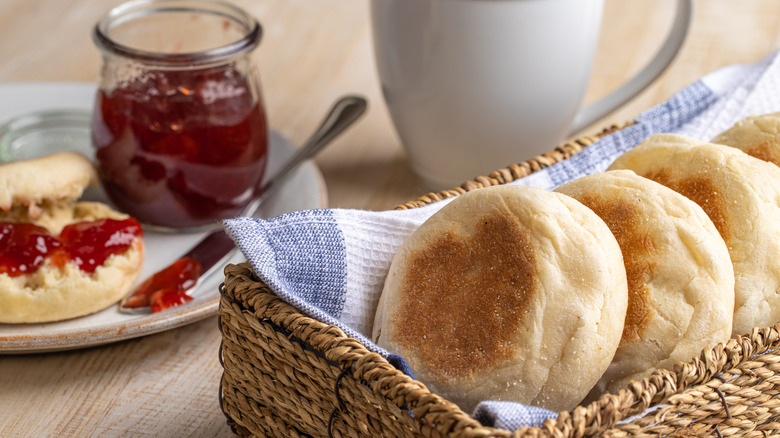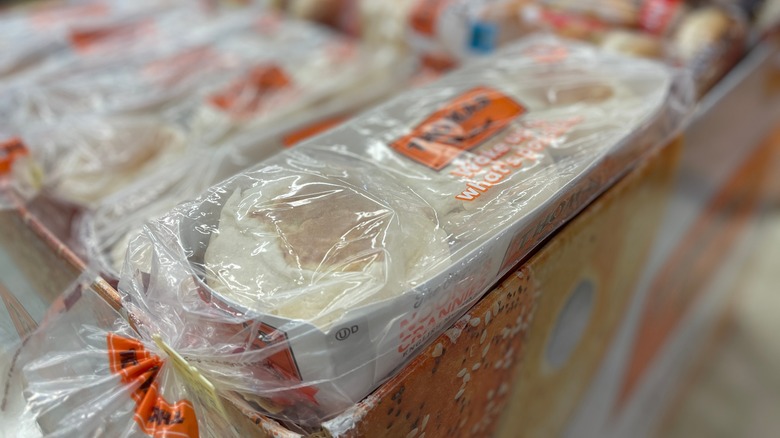The British Ex-Pat Who Invented English Muffins On American Soil
If you're an American, you may have wondered what "English muffins" are called across the pond. Are they just called "muffins?" What about the fluffy quickbread muffins baked in muffin tins that Americans know and love?
Perhaps unsurprisingly, European Cuisine explains that while small circles of leavened bread resembling the food Americans call "English muffins" are widely available in the U.K., they're typically referred to as "muffins." The classic English muffin is denser than the English muffins sold by Thomas' brand in the United States but bears many similarities. These muffins have been popular in England for centuries: in the 18th and 19th centuries, "muffin men" sold them off the street — and their legacy lives on in the children's nursery rhyme "The Muffin Man."
As for the classic, sweet, quickbread muffin known in the United States, the British website Cake Baker writes that it's known as an "American muffin" in the U.K. While these muffins are distinctly different from the muffins known in Britain, they've been gaining popularity over the past few years.
Samuel Bath Thomas brought English muffins to the states
The Nibble explains that English ex-pat and baker Samuel Bath Thomas brought his version of the English muffin to the United States when he opened his New York bakery in 1880. While Thomas' recipe was inspired by the muffins made in England, his signature "nooks and crannies" were entirely unique. Initially called "toaster crumpets," Thomas' concept caught on.
The "toaster crumpet" name was a bit of a misnomer: according to The Kitchn, crumpets and English muffins, like the ones created by Thomas, are similar but distinct. While both are cooked on griddles, crumpets are made from loose dough that uses baking soda as a leavening agent. They're cooked on one side, leaving a porous texture on the top. Muffins, meanwhile, are cooked on both sides and typically use yeast.
Eventually, the "toaster crumpet" name shifted to "English muffins" — a term that first came into use in 1902. By that time, Thomas' English muffins had made their mark on culinary history, inspiring dishes like eggs Benedict, which Taste of Home claims was likely invented at the Waldorf Hotel in 1894.
Even today, no brand quite matches Thomas' reputation. The secret of how Thomas' English Muffins get their famous "nooks and crannies" is closely guarded, as the New York Times revealed in 2010. No brand has been able to match Thomas' famous texture, as Theresa Cogswell, a baking industry consultant who spent years attempting to recreate the muffins for competitors, explained.

